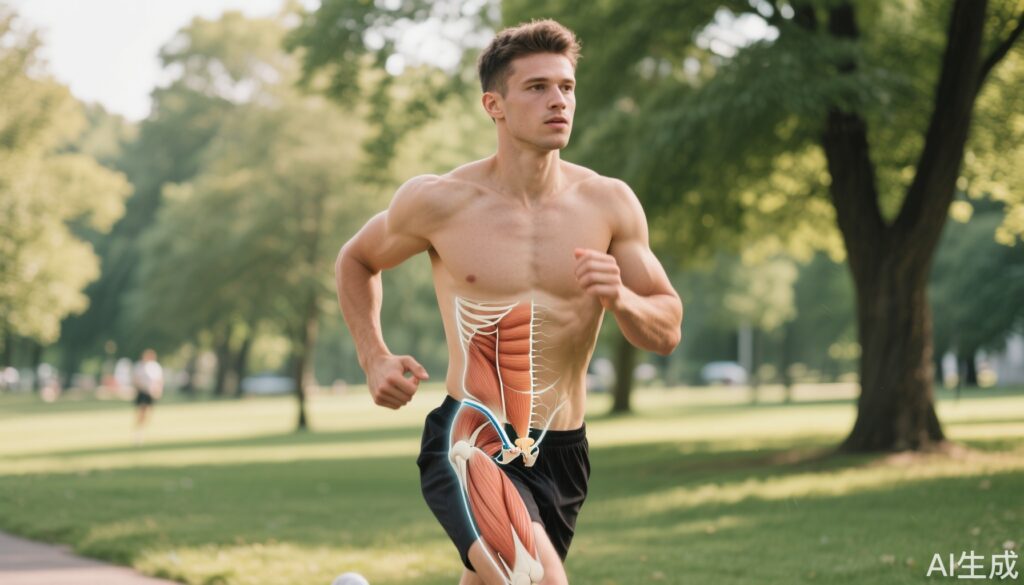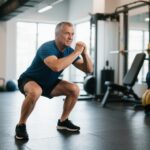Introduction: Why Sexual Health Matters for Men
Sexual health is more than just a private matter—it’s closely linked to overall well-being, confidence, and quality of life. For many men, maintaining strong sexual function is a key component of a happy, fulfilling life. Yet, factors such as stress, aging, sedentary lifestyles, and chronic illness can take a toll. The good news? Scientific evidence suggests that certain types of exercise can significantly improve men’s sexual function, offering a natural, side-effect-free way to feel better and perform better.
The Science: How Exercise Impacts Sexual Function
Healthy sexual function depends on a complex interplay of hormones, blood flow, nerve signals, and muscle strength—especially in the pelvic and core regions. Research indicates that regular physical activity can:
– Enhance cardiovascular health, improving blood flow to the genital area
– Boost production of testosterone, the hormone central to male libido and erection
– Reduce stress and improve mood, both critical for sexual desire and performance
– Strengthen muscles involved in sexual activity, enhancing endurance and satisfaction
A 2018 review in the Journal of Sexual Medicine found that men who engaged in regular exercise were less likely to experience erectile dysfunction, even after accounting for age and underlying health conditions.
Case Study: John’s Journey to Better Health
John, a 46-year-old office worker, noticed a gradual decline in his sexual stamina and interest. After a routine check-up ruled out medical causes, his doctor recommended lifestyle changes, including a targeted exercise routine. Within three months of consistent aerobic and strength training, John reported improved energy, better mood, and a renewed sense of confidence—both in and out of the bedroom.
The Three Key Exercises to Boost Sexual Function
Let’s break down the three most effective types of exercise for men looking to enhance their sexual health.
1. Aerobic Exercise
– Running: Simple, accessible, and highly effective, running boosts heart and lung health, ensuring that blood flows efficiently throughout the body—including the genitals. Improved circulation means better oxygen and nutrient delivery to sexual organs, supporting normal function. Experts recommend 3–5 sessions per week, each lasting at least 30 minutes, at a comfortable pace.
– Swimming: As a full-body workout, swimming targets the core, legs, and pelvic muscles—regions vital during sexual activity. It not only builds endurance and muscle tone but also helps alleviate stress, a major contributor to sexual dysfunction. Aim for 2–3 swimming sessions weekly, for 30–60 minutes each.
2. Strength Training
– Squats: Squats are not just for athletes. By targeting the thighs, glutes, and lower back, squats increase physical stability and explosive power—attributes that can enhance sexual performance. Even more importantly, squats are linked to increased testosterone levels. Try 2–3 sessions per week, with 3–4 sets of 10–15 repetitions.
– Push-ups: This classic exercise works the chest, shoulders, arms, and core. A strong upper body improves both appearance and the ability to support various sexual positions. Plus, push-ups train the core, which is fundamental for coordinated movement. Three to four push-up sessions per week, with 3–4 sets of 10–12 reps, is a good starting point.
3. Pelvic Floor Exercises (Kegel Exercises)
The often-overlooked pelvic floor muscles are crucial for erectile strength, ejaculation control, and bladder function. Kegel exercises involve contracting and relaxing these muscles—like holding in urine—holding for 3–5 seconds before releasing. Aim for 3–4 sets of 20–30 repetitions daily. These exercises can be done anywhere, anytime.
Table: Exercise Frequency and Benefits
| Exercise | Frequency | Major Benefits |
|---|---|---|
| Running | 3–5 times/week, 30+ mins | Improved circulation, endurance, mood |
| Swimming | 2–3 times/week, 30–60 mins | Muscle tone, stress relief, core strength |
| Squats | 2–3 times/week, 3–4 sets of 10–15 reps | Lower body strength, testosterone boost |
| Push-ups | 3–4 times/week, 3–4 sets of 10–12 reps | Upper body/core strength, coordination |
| Kegel/pelvic floor | Daily, 3–4 sets of 20–30 reps | Pelvic muscle tone, erection/ejaculation control |
Misconceptions: Myths About Exercise and Sexual Health
Some believe only young or athletic men benefit from exercise, or that more strenuous workouts always lead to better results. In reality, even moderate, consistent activity can yield significant improvements, and overtraining can actually harm sexual function by raising stress hormones and causing fatigue.
Practical Tips: Getting Started Safely
– Start slow and gradually increase intensity
– Combine aerobic, strength, and pelvic floor exercises for best results
– Consult a healthcare provider before starting a new exercise routine, especially if you have chronic health conditions
– Listen to your body and rest if you notice pain or excessive fatigue
Expert Commentary
Dr. Michael Carter, a urologist at the Men’s Health Institute, notes: “Regular exercise not only improves the physical mechanisms underlying sexual function but also boosts self-esteem and reduces anxiety, both of which are key to a satisfying sex life.”
Conclusion: A Holistic Path to Better Sexual Health
Exercise is a powerful, evidence-based tool for enhancing male sexual function. By focusing on aerobic activity, strength training, and pelvic floor exercises, men can achieve improvements in stamina, desire, and overall sexual satisfaction. The benefits extend beyond the bedroom, supporting whole-body health. Start small, stay consistent, and enjoy the journey to a healthier, more confident you.
References
1. Allen MS, Walter EE. Health-Related Lifestyle Factors and Sexual Dysfunction: A Meta-Analysis of Population-Based Research. J Sex Med. 2018;15(2):234-246.
2. Gupta BP, Murad MH, Clifton MM, et al. The Effect of Lifestyle Modification and Cardiovascular Risk Factor Reduction on Erectile Dysfunction: A Systematic Review and Meta-Analysis. Arch Intern Med. 2011;171(20):1797–1803.
3. Vardi Y, Appel B, Kilchevsky A, Gruenwald I. Does physical activity have an impact on erectile dysfunction and cardiovascular risk factors? J Sex Med. 2009;6(10):2547-2554.



